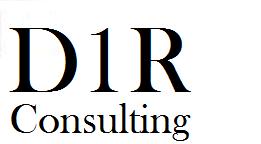Focus groups
- Details
- Published: Tuesday, 17 April 2012 18:41
- Written by David DeCiero
Focus groups are ideal venues for getting feedback from a group of individuals regarding a product or service. It only requires a group of 6-8 individuals and can give you valuable insights into your customers. The goal is to make changes to a new product or service before you implement it, saving time and money.
Putting a focus group together is fairly simple and can be aligned with your budget. A formal focus group includes 6-8 participants, along with a moderator and recorder. The participants can either be very similar or very different, depending on your needs. If you are targeting a specific demographic, then it may make sense to have all of the same type of people. If you have very little idea on the demographic, best to target a wide swath of heterogenous folks. The moderator is a trained individual who facilitates the discussion among the participants and keeps everything on track. The recorder (or scribe) is tasked with taking notes of the discussion. In preparation for the focus group, you’ll have to secure a quiet location (typically a conference room, or meeting room) and provide a defined set of themes that you will discuss. These themes will revolve around the product or service and the information which you are seeking to gather. The timeframe is usually limited to 1-2 hours, so the discussion points will have to be limited to fit within that time.
Once the focus group starts, let the discussion flow. The moderator should be as invisible as possible, only interjecting to keep the discussion on track and mitigating any issues that arise. One problem that usually crops up is the presence of dominant personalities in the group. These types of people can shut down the flow of discussion and would stop you from achieving the goal of the focus group. The moderator must mitigate the dominant personality and allow the other people to be heard. The toughest call to make in a focus group is when to shut down the discussion on one theme and move on to another. Due to the limited time, it is necessary to keep things moving to talk about all your themes. During the entire discussion, the scribe is taking notes of the discussion as well as any other happenings. Electronically recording the focus group is also an option, but people tend to act much differently if they know they are being recorded.
The next step is to analyze the information from the focus group. The notes from the scribe are taken and reviewed to find information that either validates or invalidates any assumptions you had about the product or service. Focus groups also inevitable bring up things you never would have thought of due to the different perspectives people bring. This can provide a complete validation of your idea or turn it in another direction. The real benefit of the focus group is that you can test out a new product or service without going through all the expense of actually launching it. In the long run, it saves money to test using focus groups. If an idea dies after only $500, it is better than a product that dies after $10,000.

